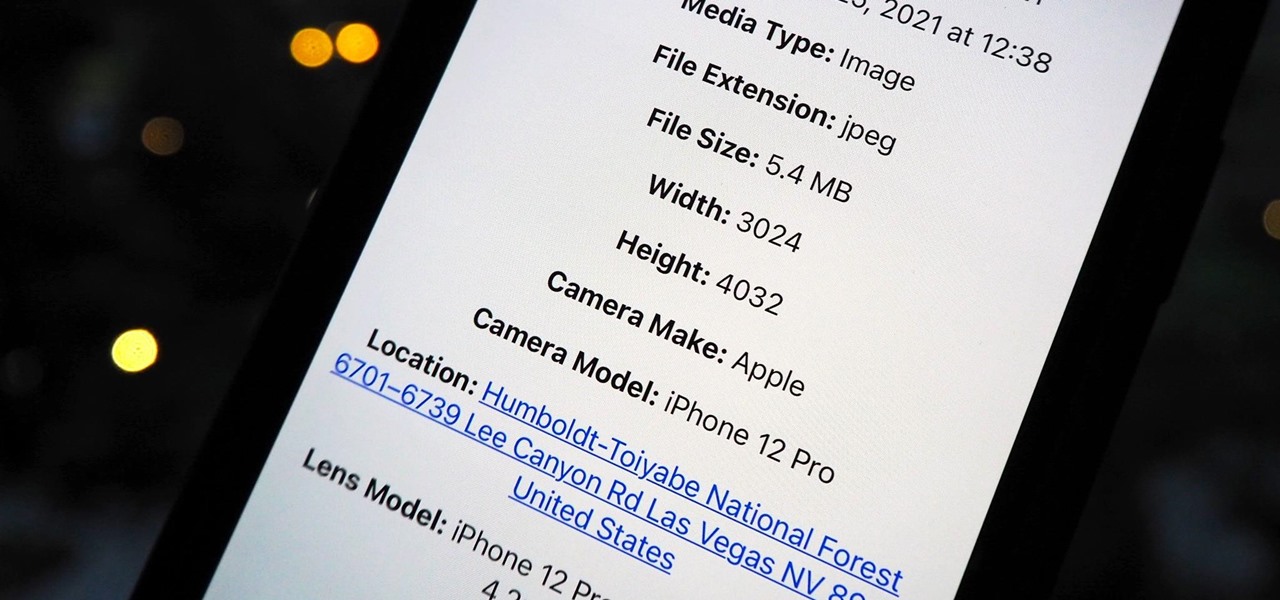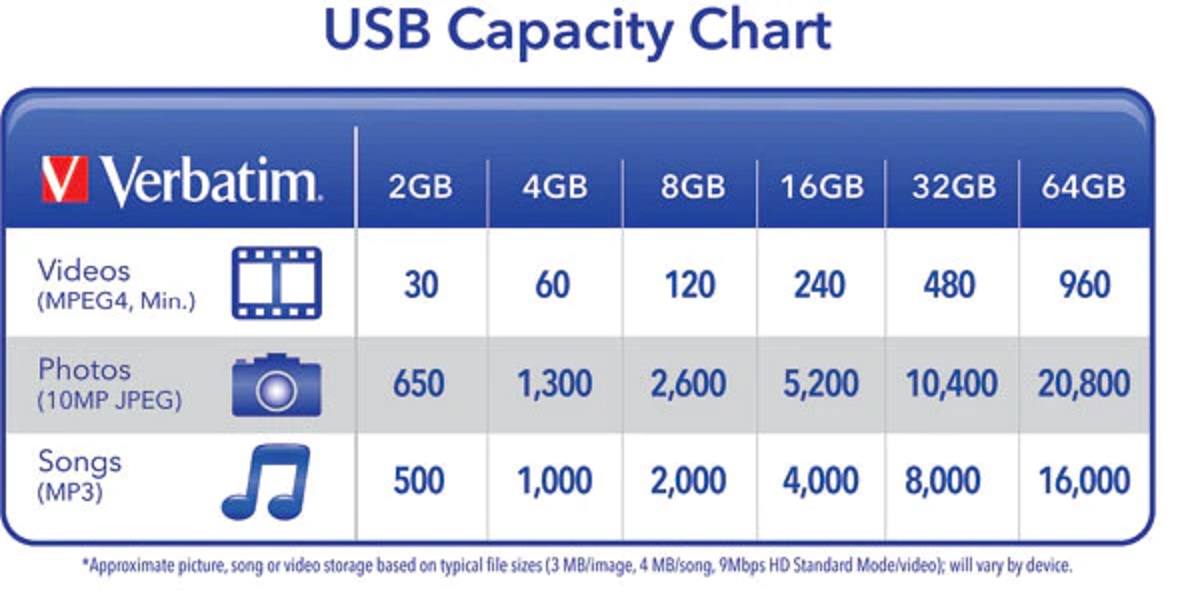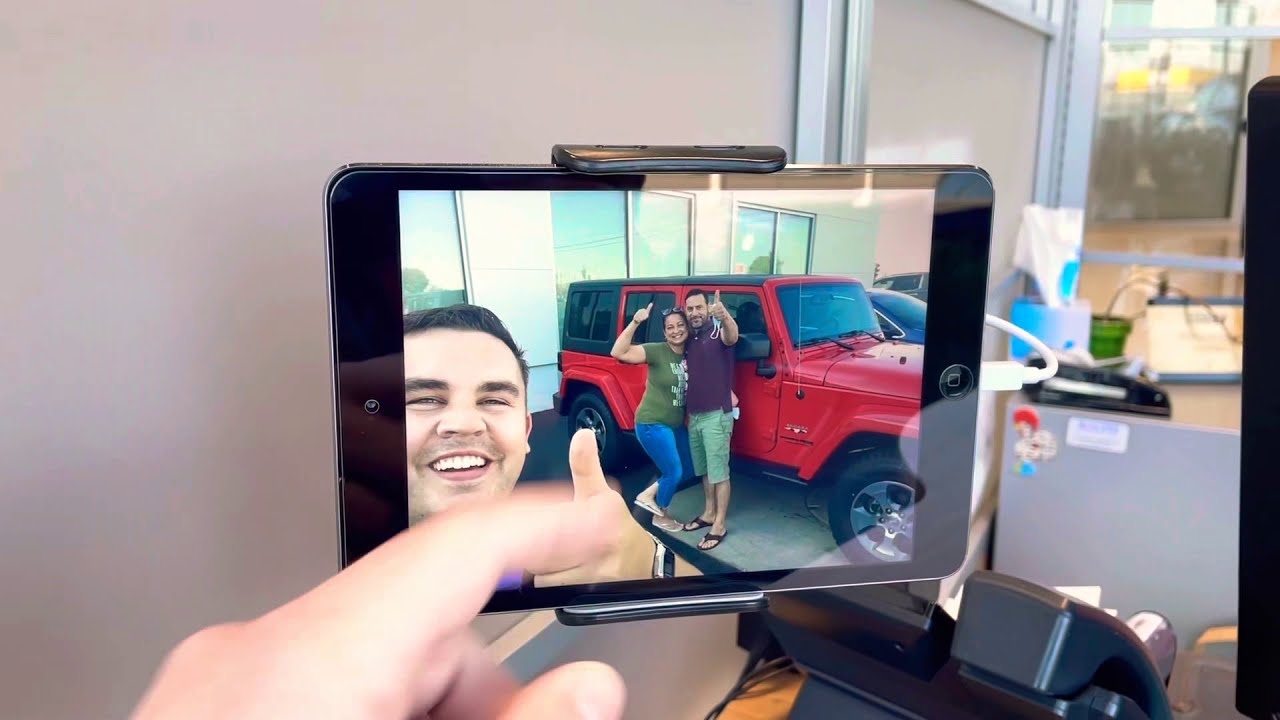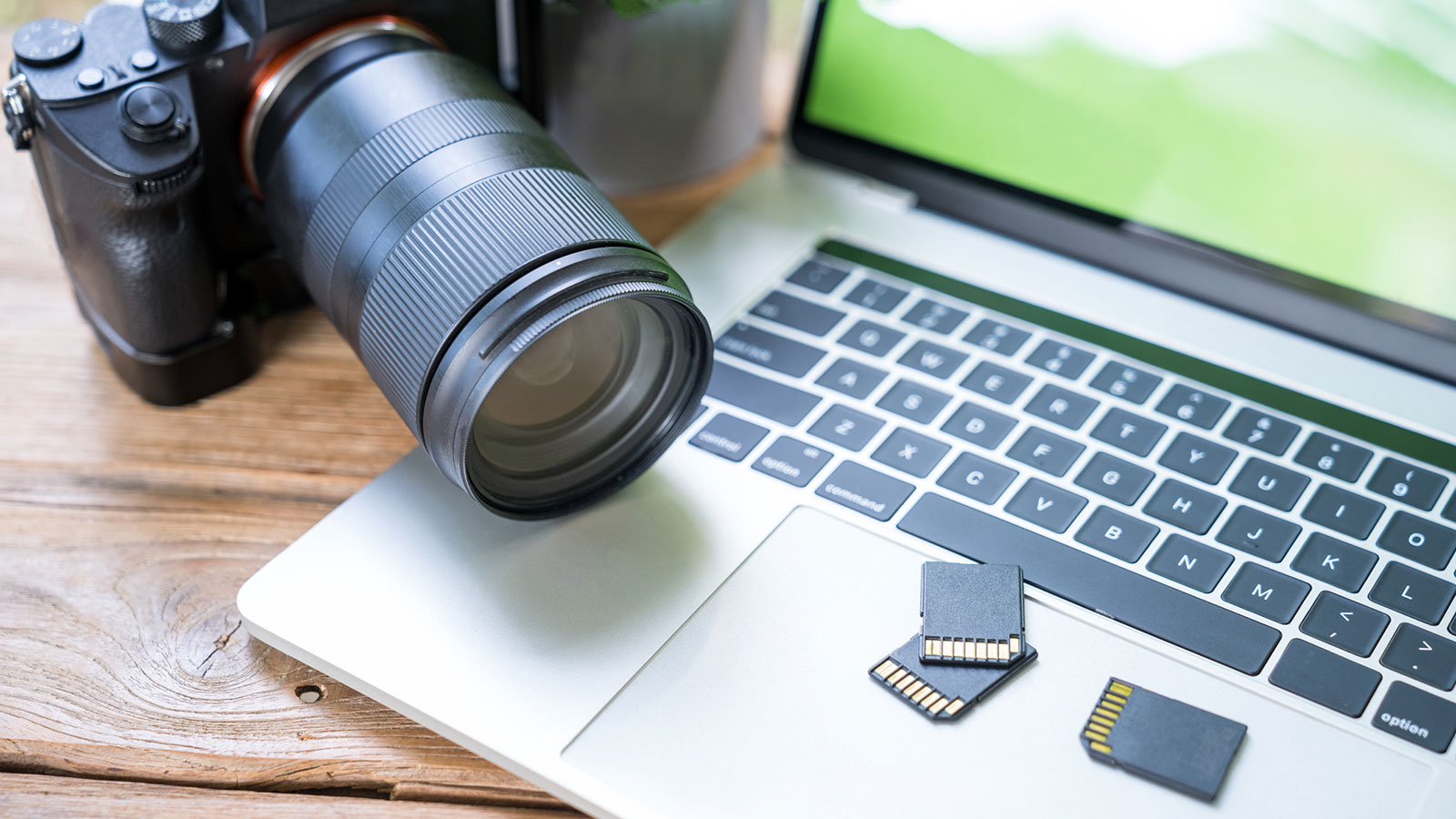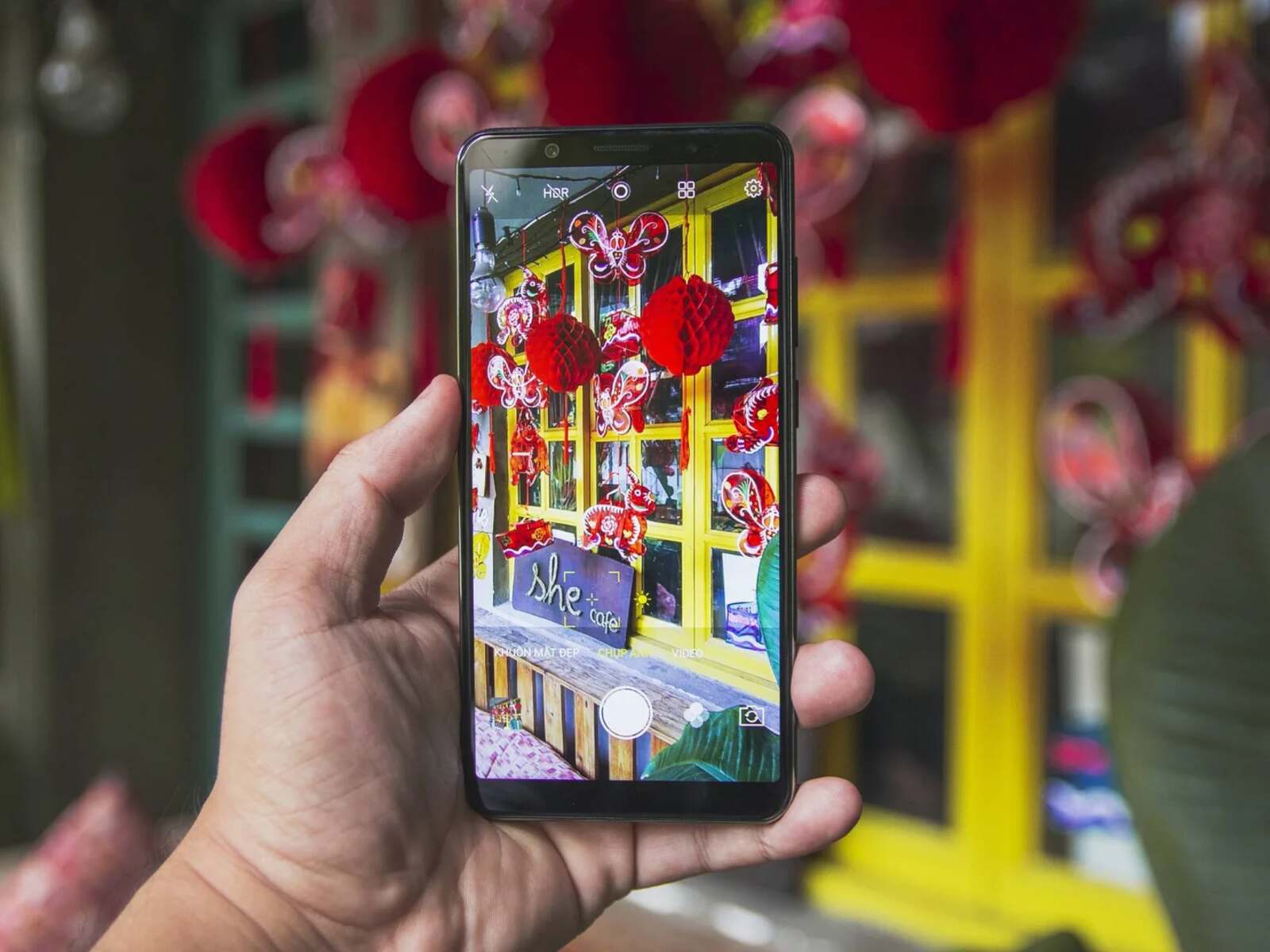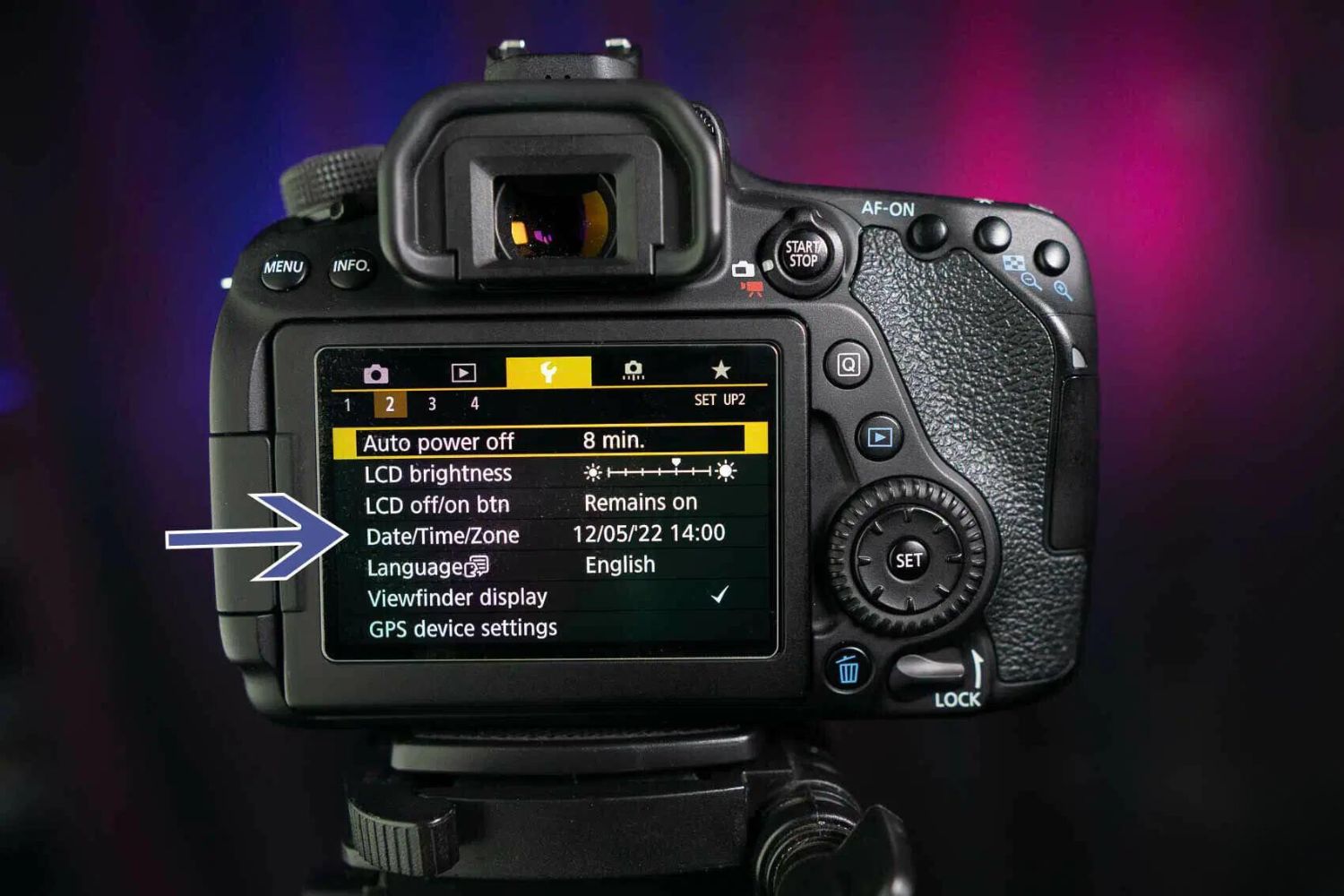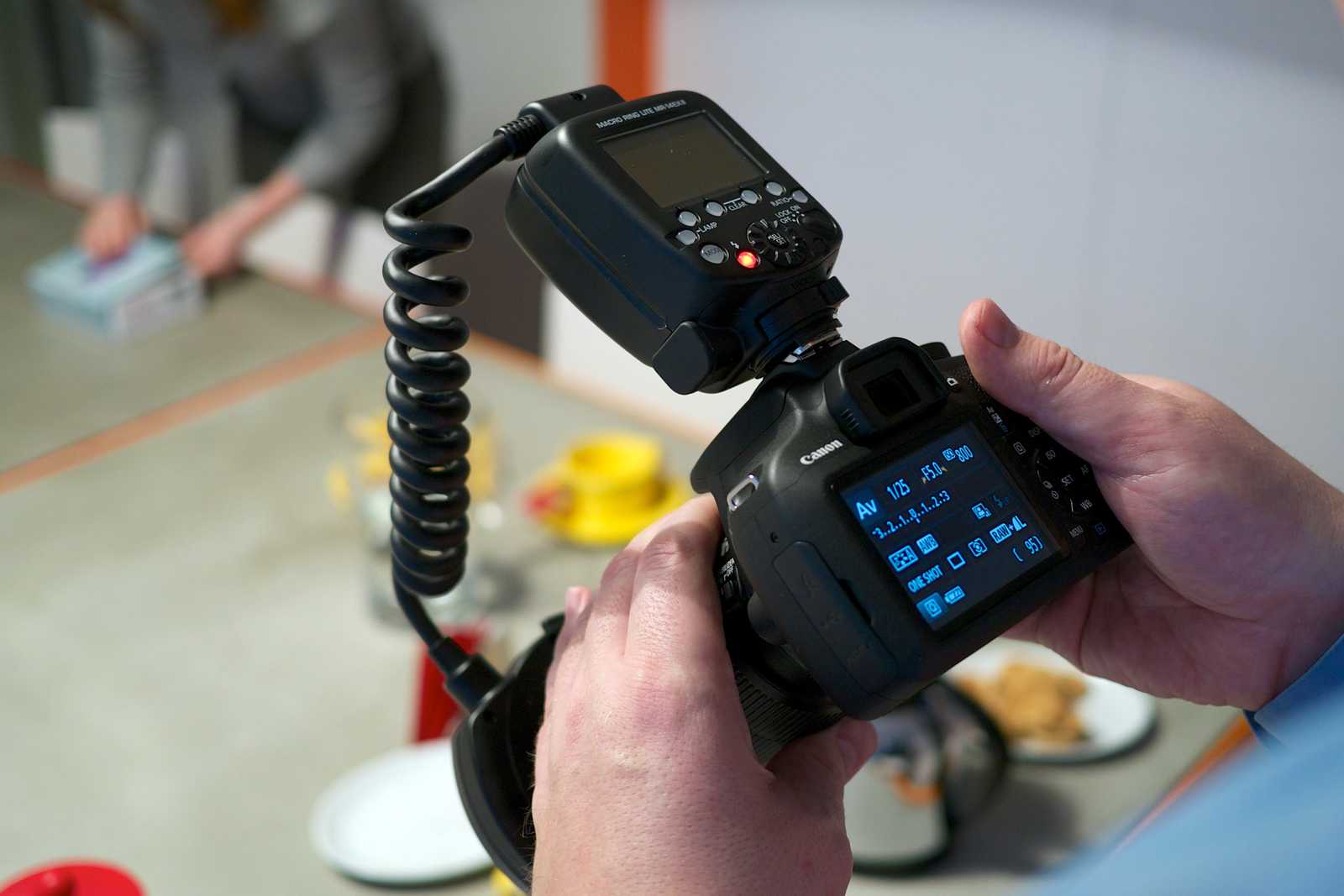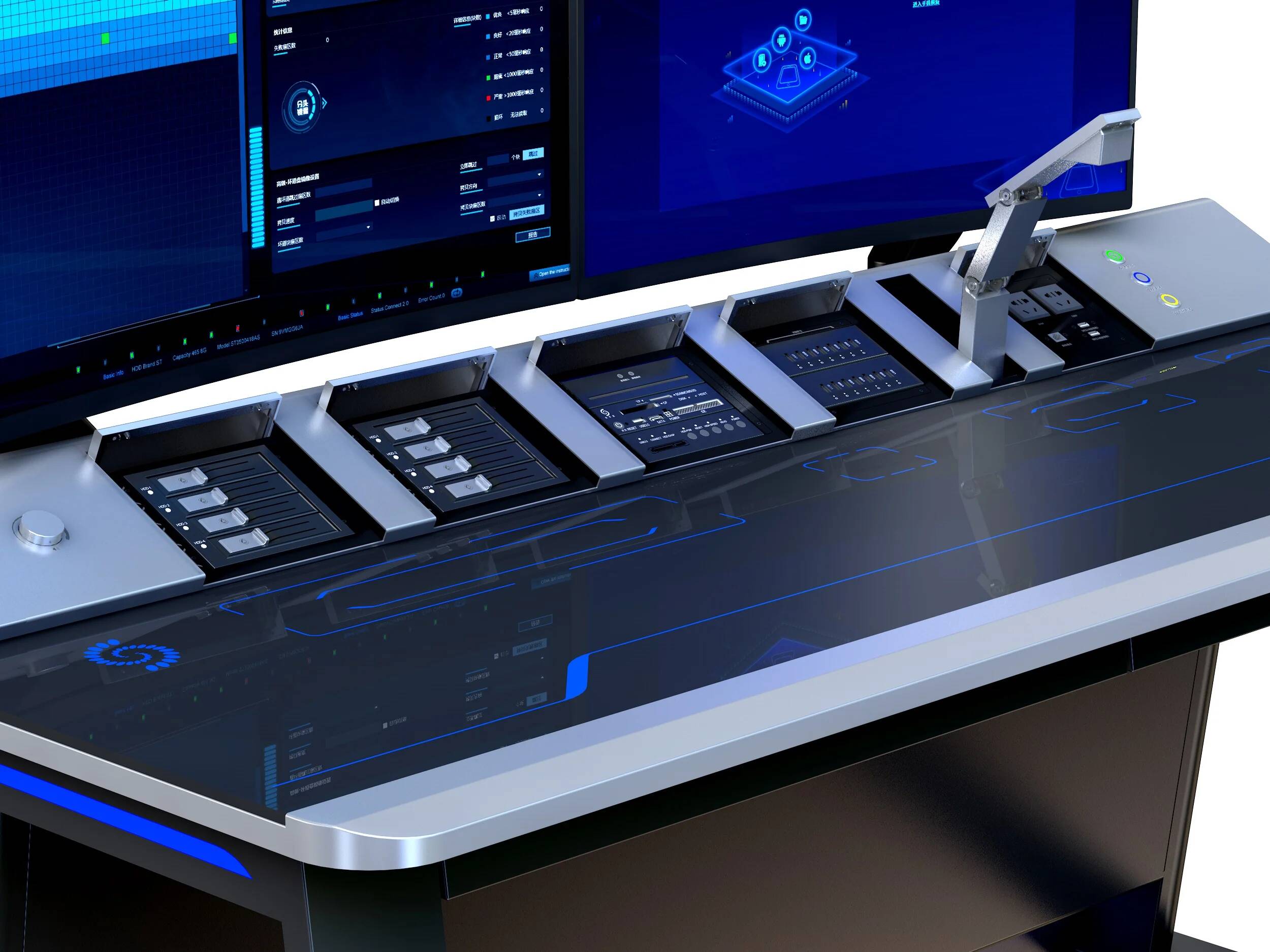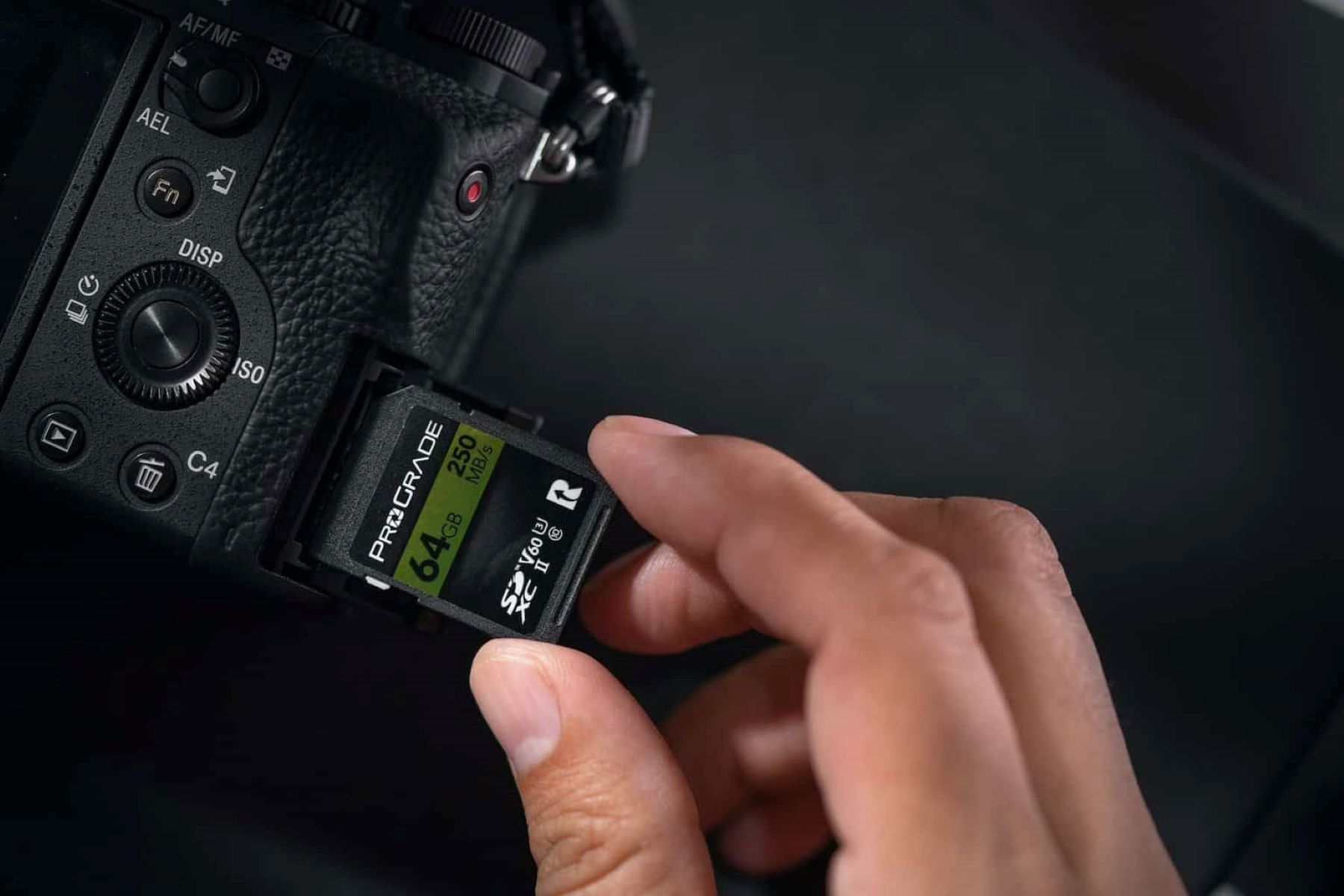Introduction
When taking a picture with a smartphone or a digital camera, we often focus on capturing the perfect shot without considering the hidden details that are recorded behind the scenes. These hidden details, known as metadata, provide valuable information about the image, such as the date and time the photo was taken, the camera settings used, and even the geographic location of where the picture was snapped.
Understanding the importance of metadata is crucial in today’s digital age, as it can serve various purposes, ranging from organizing and sorting images to protecting copyright and preserving the integrity of visual content. While both smartphones and digital cameras have the capability to capture stunning photos, the way they record metadata differs significantly.
In this article, we will delve into the world of metadata and explore the differences between the metadata recorded when a picture is taken with a smartphone compared to a digital camera. By understanding these distinctions, photographers and users can optimize their workflow, ensuring that the metadata captured aligns with their specific needs.
Definition of Metadata
Before we dive into the specifics of metadata recorded by smartphones and digital cameras, let’s first establish a clear understanding of what metadata actually is. In simple terms, metadata refers to the additional information attached to a digital file, providing essential details about its content and characteristics. In the context of photography, metadata consists of various fields that describe the image, such as the camera settings, date and time of capture, and even the GPS coordinates of the location.
Metadata can be classified into two main categories: technical and descriptive. Technical metadata includes information about the camera model, aperture, shutter speed, ISO, and focal length, among others. This data helps photographers analyze and evaluate the camera settings used to capture a particular image. Descriptive metadata, on the other hand, provides contextual information such as the title, author, copyright information, and a brief description of the image’s content.
Metadata plays a crucial role in organizing and managing digital photos. It allows photographers to easily search for images based on specific criteria, such as date, location, or camera settings. This makes it easier to locate and retrieve specific photos from a vast collection, saving precious time and effort.
In addition to its organizational benefits, metadata also serves other practical purposes. For example, copyright information embedded in the metadata can help protect photographers’ intellectual property by identifying the original creator and providing contact information. Metadata also aids in maintaining the integrity and authenticity of images, as any modifications or alterations made to the digital file can be recorded and traced back to the original.
Now that we have a clear understanding of what metadata is, let’s explore how smartphones and digital cameras differ in the way they record this valuable information.
What is a Smartphone
A smartphone is a mobile device that combines the functionalities of a traditional mobile phone with advanced computing capabilities. In addition to making phone calls and sending text messages, smartphones offer a wide range of features, including internet browsing, social media access, GPS navigation, and, of course, the ability to capture high-quality photos.
Designed to be portable and user-friendly, smartphones have become an essential tool for communication, productivity, and entertainment. They boast powerful processors, high-resolution displays, and sophisticated operating systems that enable users to run various applications and perform complex tasks. With the inclusion of built-in cameras, smartphones have transformed how we capture and share moments, making photography accessible to anyone with a smartphone in their pocket.
Modern smartphones come equipped with advanced camera functionalities, allowing users to take stunning photos on the go. These cameras feature multiple lenses, high megapixel counts, and advanced image processing algorithms, resulting in sharp, vibrant, and detailed images. Smartphones also offer various shooting modes, such as portrait, panorama, and night mode, further enhancing the photography experience.
Aside from their impressive imaging capabilities, smartphones are packed with sensors and technologies that contribute to the overall user experience. Accelerometers, gyroscopes, and GPS modules help detect device orientation, motion, and location, respectively. This information is not only useful for gaming and navigation purposes but also for recording metadata associated with the captured images.
Moreover, smartphones are equipped with wireless connectivity options like Wi-Fi and Bluetooth, enabling users to instantly share photos with friends and family or upload them to social media platforms. The integration of cloud storage services also allows for seamless backup and access to images across different devices, ensuring that valuable memories are never lost.
Now that we have a clear understanding of what a smartphone is and the features it offers, let’s explore how the act of taking a picture with a smartphone differs from using a digital camera.
How a Picture is Taken with a Digital Camera
When using a traditional digital camera, the process of taking a picture involves several distinct steps. First, the photographer composes the shot by framing the scene through the camera’s viewfinder or LCD screen. They can adjust settings such as aperture, shutter speed, and ISO to achieve the desired exposure and depth of field.
Once the composition is finalized, the photographer presses the shutter button, triggering a series of actions within the camera. The camera’s sensor captures the incoming light and converts it into a digital signal. This signal is then processed by the camera’s image processor to produce a high-quality, uncompressed image file.
During this process, the digital camera also records a significant amount of metadata related to the captured image. This metadata includes technical information such as the camera make and model, shutter speed, aperture, ISO, focal length, and flash settings. It may also contain information about the date, time, and time zone when the picture was taken.
Additionally, digital cameras often have built-in GPS modules or the ability to connect to external GPS devices. This enables them to record geographic information, including the precise latitude and longitude coordinates of the location where the photo was taken. This geotagging metadata can be particularly useful for photographers who want to keep track of where their images were captured or for creating location-based visual narratives.
The metadata recorded by a digital camera is typically stored alongside the image file in a standardized format, such as EXIF (Exchangeable Image File Format). This ensures compatibility with various software applications, making it easy to access and review the metadata information.
Now that we have explored the process of taking a picture with a digital camera and the associated metadata, let’s move on to understanding how smartphones handle the capturing of images and the metadata they record.
How a Picture is Taken with a Smartphone
Taking a picture with a smartphone is a straightforward and intuitive process, thanks to the user-friendly interfaces and advanced camera technologies integrated into these devices. When capturing an image with a smartphone, the user simply launches the camera application and frames the desired subject on the device’s screen.
Smartphones offer various shooting modes and settings that allow users to adjust parameters such as exposure, focus, and white balance. Many smartphones also incorporate artificial intelligence algorithms that automatically optimize the camera settings based on the scene and lighting conditions, ensuring optimal image quality without manual adjustments.
When the user taps the capture button or presses the virtual shutter icon on the screen, the smartphone’s camera sensor captures the incoming light. The device’s image signal processor (ISP) then processes this data, using algorithms to enhance the image quality and reduce noise. These advanced processing techniques result in vibrant colors, sharp details, and well-balanced exposure.
While the image sensor and ISP technology play a vital role in capturing a high-quality photo, smartphones go beyond just taking the image. At the moment the picture is taken, smartphones record a significant amount of metadata associated with the captured image.
Similar to digital cameras, smartphones record technical information in their metadata, such as the camera model, aperture, shutter speed, ISO, and focal length. However, due to the compact nature of smartphones, some technical details may be limited or simplified compared to larger dedicated cameras.
In addition to technical metadata, smartphones often incorporate a variety of sensors, including accelerometers, gyroscopes, and magnetometers. These sensors work together to capture additional information, such as the device’s orientation, motion, and even the Earth’s magnetic field. This data can be utilized to provide features like image stabilization, augmented reality effects, and automatic image rotation based on the device’s orientation.
Another crucial element of smartphone photography is the integration of GPS technology. Smartphones have built-in GPS modules that enable them to record precise location information at the time the image is captured. This geotagging metadata can be extremely useful for organizing and categorizing images based on location or for enabling navigation and mapping features.
Overall, smartphones have revolutionized the way pictures are taken, offering convenience, portability, and advanced camera technologies. The metadata recorded during the process provides valuable information that enhances the user experience and enables effective organization and management of smartphone images.
Now that we have explored how pictures are taken with a smartphone and the metadata recorded during the process, let’s compare the metadata captured by digital cameras and smartphones.
Metadata Recorded by a Digital Camera
Digital cameras are known for their ability to capture high-quality images, and along with the image data, they also record a significant amount of metadata. This metadata provides valuable information about the technical aspects of the image and the circumstances surrounding its capture.
Technical metadata recorded by a digital camera includes details such as the make and model of the camera, the lens used, aperture, shutter speed, ISO, and focal length. These technical details help photographers analyze and evaluate the camera settings used in a particular shot. By reviewing this metadata, photographers can better understand the parameters that contributed to the final image quality and make necessary adjustments in future shots.
Additionally, digital cameras also record the date, time, and even the time zone at which the image was captured. This information is crucial for organizing and sorting images chronologically, especially when dealing with large collections of photos. It helps photographers locate specific images taken on a particular day or during a specific event.
Moreover, many digital cameras are equipped with built-in GPS functionalities or the ability to connect to external GPS devices. This allows cameras to record precise geographic information, including latitude, longitude, and sometimes even altitude. The inclusion of GPS data in the metadata, known as geotagging, provides photographers with the ability to track and map the locations where their images were taken.
Other metadata elements that may be recorded by a digital camera include the camera’s serial number, software version, and copyright information. Embedding copyright information in the metadata can help protect photographers by clearly identifying the original creator and providing contact details.
The metadata captured by a digital camera is typically stored in a standardized format, such as EXIF (Exchangeable Image File Format). This format ensures compatibility across different software applications, allowing photographers to easily access, view, and edit the metadata associated with their images.
In summary, digital cameras record various technical and contextual metadata that provides valuable information about the captured images. The inclusion of camera settings, time and date, geographic data, and copyright details in the metadata allows photographers to better understand and manage their images.
Metadata Recorded by a Smartphone
Smartphones not only serve as communication and entertainment devices but also offer powerful camera capabilities. When capturing images with a smartphone, a considerable amount of metadata is recorded alongside the image data, providing valuable information about the photo and its context.
Similar to digital cameras, smartphones record technical metadata that includes information such as the smartphone model, camera specifications, aperture, shutter speed, ISO, and focal length. This data allows photographers to review the camera settings used in a particular shot and make necessary adjustments for future photos.
In addition to technical metadata, smartphones have the advantage of incorporating various sensors and technologies that contribute to the metadata recorded. For example, smartphones typically include built-in GPS modules, allowing them to record precise geographic information, including latitude, longitude, and sometimes altitude. This geotagging metadata can be particularly useful for organizing and categorizing images based on location or for enabling location-based services.
Furthermore, smartphones contain a range of sensors like accelerometers, gyroscopes, and magnetometers, which capture data related to the device’s movement, orientation, and magnetic fields. This sensor data can be utilized to enhance the image stabilization, enable unique shooting modes, and support augmented reality features. The inclusion of this sensor metadata provides additional context to the captured image.
Moreover, smartphones record the date, time, and time zone at which the image is captured. This timestamp metadata allows for chronological organization of photos, making it easier to locate images taken at specific times or during particular events.
Additionally, smartphones often store metadata related to the camera app used, such as the app version and settings like HDR (High Dynamic Range) mode or flash usage. This information helps photographers recall the specific camera functionalities employed during the image capture process.
Importantly, smartphones sometimes record metadata related to the device’s software and hardware, such as the operating system version, device manufacturer, and even battery level. These details can be relevant in assessing the overall performance and capabilities of the smartphone at the time of capture.
Overall, smartphones capture a rich set of metadata that provides important details about the captured image. The combination of technical data, geotagging information, sensor metadata, and timestamps offers valuable context and allows photographers to better organize, analyze, and share their smartphone images.
Comparison of Metadata Recorded by Digital Camera and Smartphone
While both digital cameras and smartphones have the ability to capture stunning images, there are distinct differences in the metadata they record. Let’s compare the metadata captured by digital cameras and smartphones to understand their unique characteristics.
Technical Metadata: Both digital cameras and smartphones record technical metadata such as camera model, aperture, shutter speed, and ISO. However, digital cameras often provide more detailed technical information due to their dedicated imaging capabilities and advanced settings. Smartphones, on the other hand, may simplify certain technical details, considering their smaller form factor and focus on user-friendly interfaces.
Geographic Metadata: Digital cameras are often equipped with GPS modules or have the ability to connect to external GPS devices, allowing them to record precise geographic information. This geotagging metadata provides the exact location where the image was captured. Smartphones, by default, have built-in GPS technology and seamlessly record geotagging metadata alongside the image data, making it easy to track and categorize images based on location.
Sensor Metadata: Smartphones come with a range of sensors like accelerometers, gyroscopes, and magnetometers that capture data about the device’s movement, orientation, and magnetic fields. This sensor metadata enhances the overall photography experience by enabling features like image stabilization, augmented reality effects, and automatic image rotation based on the device’s orientation. Digital cameras do not typically record such sensor metadata.
Software and Hardware Metadata: Smartphones often store metadata related to the camera app used, including app version and specific settings such as HDR mode or flash usage. This information helps photographers recall the specific camera functionalities employed during the image capture process. Digital cameras do not typically record specific software metadata related to the camera app used.
Additional Metadata: Regardless of the device, both digital cameras and smartphones record metadata such as the date, time, and time zone of image capture. This metadata aids in sorting and organizing photos chronologically. Furthermore, smartphones may also include hardware and software metadata such as the operating system version, device manufacturer, and battery level. Digital cameras do not record these additional metadata elements.
In summary, while there are similarities in the technical metadata captured by digital cameras and smartphones, smartphones have the advantage of recording additional metadata like geotagging, sensor data, and specific camera app settings. On the other hand, digital cameras may provide more detailed technical metadata due to their dedicated imaging capabilities. The choice ultimately depends on the specific needs and preferences of the photographer.
Conclusion
The recording of metadata during the capture of digital images plays a crucial role in organizing, analyzing, and preserving visual content. Both digital cameras and smartphones are capable of capturing stunning photos, but they differ in the way they record metadata.
Digital cameras excel in capturing detailed technical metadata, providing photographers with a comprehensive understanding of camera settings and parameters. They also offer the ability to record precise geographic information through built-in GPS or external connectivity. However, digital cameras may lack sensor data and specific camera app metadata.
On the other hand, smartphones offer a convenient and portable solution for photography, with the added advantage of recording sensor metadata, geotagging information, and specific camera app settings. They provide a seamless integration of GPS technology, making it easy to track and categorize images based on location. However, smartphones may simplify technical metadata to accommodate their smaller form factor and user-friendly interfaces.
In conclusion, understanding the differences between the metadata recorded by digital cameras and smartphones allows photographers to optimize their workflow and make informed decisions about their preferred capturing devices. The choice between a dedicated digital camera and a smartphone depends on the specific needs and preferences of the photographer, including the level of technical control, desired convenience, and the importance of sensor and geotagging metadata.







